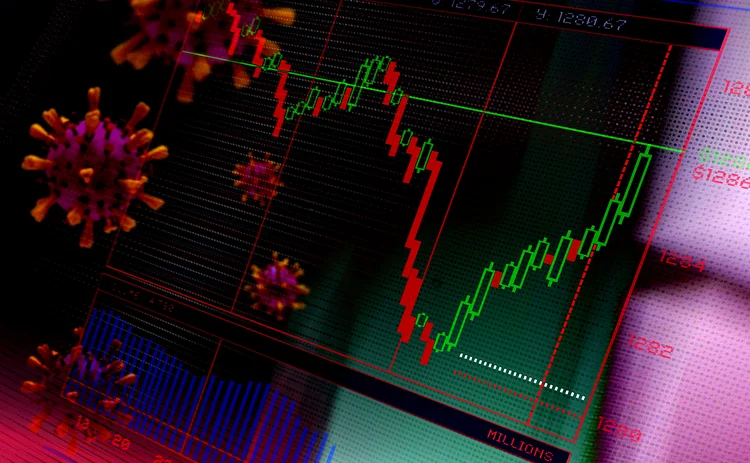
This article was paid for by a contributing third party.More Information.
Confidence in pricing data is essential in a distressed market

Jason Waight, head of regulatory affairs, Europe at MarketAxess, explores the key role of reliable data sources in offering a commercial advantage to traders during the March crisis

When market volatility hit new highs in March, price formation became more difficult for firms across the buy and sell sides. Firms with confidence in making prices on both sides of the Street were able to deliver better returns for investors and their shareholders.
Greenwich Associates found that electronic trading increased around 14% during the peak of the liquidity crisis in March and April. This was less than the rise in voice trading. But the increase has been sustained over time – MarketAxess itself saw record trading volumes through the end of April and into May – and the breadth of liquidity has been considerably higher due to the wider access to trading counterparties.
Historically, traders on the buy side have instinctively reverted to phoning brokers when prices begin to move quickly- to ensure they have live prices.
The dealers will look at their own risk books, at the interdealer market – for laying off risk – and at their relationship with a client to determine how much risk they can take on and how to price it. To engage in a market experiencing fast-moving prices, traders on either side wanting to generate returns must be confident in pricing the data they have access to.
Pre-trade, buy-side traders typically see dealer prices and axes – directional, instrument-specific indications of interest in trading a bond – which tell them where the market is. They are also able to look at commercial data streams that show bond trading activity to assess where the market might be pre‑trade, and then bring that together at-trade so the value of an opportunity can be contextualised.
Dealers on the sell side are reliant on their own trading activity and commercial data streams to know whether the prices they are making are good or not.
However, since 2010, regulatory constraints and changing business models have reduced the amount of risk that broker-dealers are prepared to warehouse for their clients. It has become increasingly expensive as capital adequacy rules have come into effect, and hedge fund activity has been considerably constrained – in part due to the US Volcker rule, which limits banks’ support for them.
When the market was tested in March, the selloff created a directional movement that led to some dealers not being prepared to take risk on – even in very liquid fixed income asset classes. For example, the US Federal Reserve’s Treasury Markets Practices Group cited “exceptionally wide bid/ask spreads and difficulty in executing transactions or finding liquidity in Treasury markets”, which are typically the most liquid bond market. Phone calls did not generate prices when they were most needed. Electronic trading and commercial data sources did.
The crunch
Faced with a substantial reduction in the number of banks making prices – analysis by the International Capital Market Association found that “overall dealer capacity appears to have shrunk at a time when it was needed” – trading desks and portfolio managers had to base prices on other data sources. Relying on a single electronic price feed at this point was challenging: if a portfolio’s value could not be priced with confidence, funds would have to shutter for a period, preventing clients getting out of – or buying into – a portfolio until the prices of the underlying assets could be confirmed. In some cases, funds had to shutter over weekends while they sought to ascertain those values.
Yet there were dealers and asset managers able to function throughout the crisis. For example, we saw a continuous increase in algo usage (+44% compared with the same time last year) and that meant the more sophisticated dealers had the confidence to quote prices throughout the volatility. That led to a shift in favour of those dealers in electronic request-for-quote.
In MarketAxess Open Trading, which allows all-to-all execution between market participants, buy-side firms that had the capacity to make prices were able to buy assets – where their mandates allowed – at distressed prices, creating alpha-generating opportunities for their portfolio managers. Open Trading volume in the first quarter of 2020 was $209 billion – up 55% year-on-year. This represented nearly one-third of the record $660 billion of total credit trading volume on MarketAxess in the quarter.
Buy-side firms that could not get prices from their dealers elsewhere were able to find price-makers from a far broader range of other market participants. These include exchange-traded fund price-makers, asset managers, hedge funds and smaller banks whose local activity gave them a different liquidity profile to larger global players.
Trading in that environment is fast. The investment function needs certainty, which is only possible if it has a solid view of the price for bond in the market at a given point, and a fundamental view.
Yet this market volatility was not the most unusual part of the crisis in March. Not only was the market stressed, businesses were stressed operationally by social distancing – a required response to Covid‑19. Social distancing required firms to trade from home across the investment and dealer community. This disrupted trading and investment workflows, the usual communication channels for centralised dealing desks, and proximity between portfolio managers and traders.
At this point, any discrepancies in the market view between desks was very problematic. Having trusted data sources that could be seen across the portfolio management and trading functions was absolutely paramount to allow responses to trading opportunities within minutes – the timeframe typically needed to respond effectively.
For firms that had already invested in data inputs and could be confident in the analytics those inputs supported, access to data was a crucial advantage over their competitors. Within those firms, the distribution of data between desks was also vital as it ensured that, even within a decentralised or distributed operation, there was a single view of the market. The outcome was substantially faster decision-making.
Takeaways from the 2020 crisis
The massive spike MarketAxess saw in Open Trading activity in March reflected three dynamics: confidence in price-making across dealers and non-dealers based on available data; the successful provision of liquidity by alternative and traditional sources; and the cost savings investors can realise when they have the opportunity to set their own price and trade at the mid.
Where traditional dealers were able to support liquidity and non-dealers were stepping in, it was confidence in their data that allowed them to quote prices in a distressed market based on their own picture of market activity.
This year we will see the discussion of a European consolidated tape provider being pushed. While official centralised pricing tapes can act as basic benchmarks for firms, they typically lack the speed and rigour that can support real-time trading.
Traders need greater confidence in data, based on strong price aggregation, composition methodology and quality, which can only be supported by a commercial offering.
With trading desks continuing to work from home – and the potential for more volatility ahead – better real-time data is increasingly necessary, based on the experience of March 2020.
Sponsored content
Copyright Infopro Digital Limited. All rights reserved.
As outlined in our terms and conditions, https://www.infopro-digital.com/terms-and-conditions/subscriptions/ (point 2.4), printing is limited to a single copy.
If you would like to purchase additional rights please email info@risk.net
Copyright Infopro Digital Limited. All rights reserved.
You may share this content using our article tools. As outlined in our terms and conditions, https://www.infopro-digital.com/terms-and-conditions/subscriptions/ (clause 2.4), an Authorised User may only make one copy of the materials for their own personal use. You must also comply with the restrictions in clause 2.5.
If you would like to purchase additional rights please email info@risk.net
